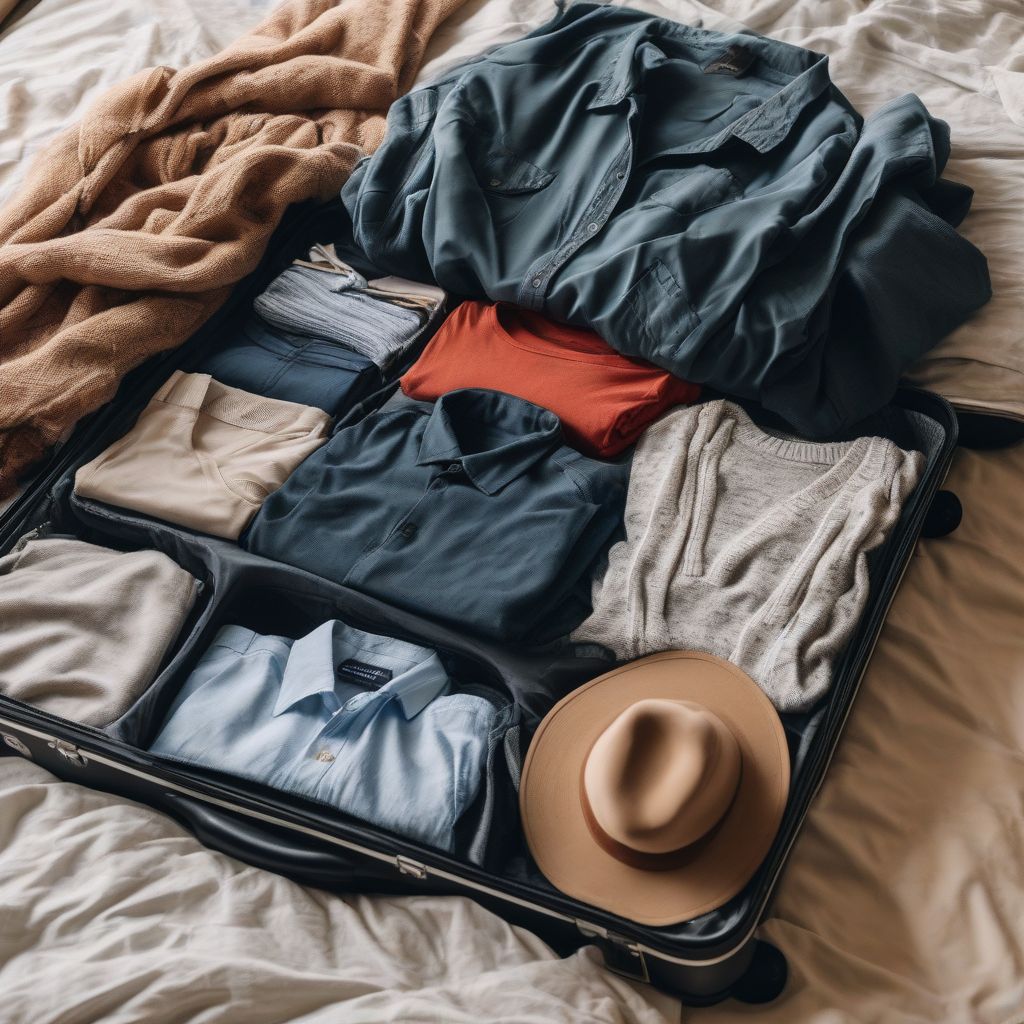Packing for a trip can feel like a game of Tetris, especially when you’re trying to prepare for different climates. One minute you’re dreaming of sunny beaches, the next you’re picturing yourself exploring chilly mountaintops. But fear not, fellow traveler! Choosing the right clothing for your adventure doesn’t have to be a packing nightmare. With a little planning and these savvy tips, you’ll be ready to conquer any climate in style and comfort.
Understanding Your Destination’s Climate
Before you even think about opening your suitcase, it’s crucial to research your destination’s climate. What’s the average temperature during your travel dates? What about rainfall, humidity, and wind conditions? Websites and apps like AccuWeather, Weather.com, and Wunderground can be your best friends during this phase.
Packing for Warm Weather Destinations
Sun-drenched beaches, sparkling turquoise waters, and vibrant tropical forests – packing for warm weather destinations evokes images of pure bliss. But even paradise requires some strategic packing.
Essential Items:
- Lightweight and Breathable Fabrics: Think cotton, linen, and moisture-wicking synthetics. These materials will help you stay cool and comfortable even when the temperature rises.
- Loose-Fitting Clothing: Opt for flowy dresses, skirts, loose-fitting pants, and breathable shirts to allow for better air circulation.
- Swimwear: Don’t forget to pack your favorite swimsuit (or two!) for those refreshing dips in the pool or ocean.
- Sun Protection: A wide-brimmed hat, sunglasses, and a high-SPF sunscreen are non-negotiable for safeguarding yourself from the sun’s rays.
- Comfortable Sandals or Flip-flops: Perfect for strolling along the beach or exploring local markets.
Expert Tip:
“When packing for a warm climate, consider bringing along a lightweight scarf or sarong,” says travel blogger Sarah Jones. “It can be incredibly versatile – use it as a beach cover-up, a shawl for cool evenings, or even as a head covering when visiting religious sites.”
Packing for Cold Weather Destinations
Packing for a winter wonderland? From cozy ski trips to charming Christmas markets, cold weather destinations offer a unique kind of magic. But staying warm and comfortable requires some careful consideration.
Essential Items:
- Layering Essentials: The key to conquering the cold is layering. Start with thermal underwear (merino wool or synthetic blends are excellent choices), followed by insulating layers like fleece jackets or sweaters, and top it off with a waterproof, windproof outer layer.
- Warm Accessories: Don’t underestimate the power of a warm hat, gloves, and a scarf. These small items can make a world of difference when braving chilly temperatures.
- Waterproof Boots: Invest in a pair of insulated, waterproof boots with good traction to keep your feet warm and dry on snowy or icy surfaces.
- Wool Socks: Ditch the cotton socks and opt for wool socks instead. Wool is naturally moisture-wicking and helps regulate temperature, keeping your feet warm and dry.
Expert Tip:
“Pack a small, reusable hand warmer,” advises seasoned traveler Mark Williams. “It’s a lifesaver for keeping your hands toasty, especially if you’re spending extended periods outdoors.”
Packing for Temperate Climates
Temperate climates offer the best of both worlds, with mild temperatures and generally predictable weather patterns. However, it’s still wise to be prepared for occasional showers or unexpected temperature drops.
Essential Items:
- Versatile Layers: Think lightweight sweaters, cardigans, and jackets that can be easily added or removed as needed.
- Breathable Tops and Bottoms: Pack a mix of short-sleeved and long-sleeved shirts, as well as pants, capris, or skirts.
- Comfortable Walking Shoes: Choose footwear that can handle both city streets and light hikes.
- A Lightweight Rain Jacket or Umbrella: Don’t let an unexpected shower dampen your adventures.
Expert Tip:
“Packing cubes are a game-changer for temperate climates,” says organization guru Lisa Green. “Use them to separate your warm-weather and cool-weather clothing so you can easily adjust your packing as needed.”
 Packing for Different Climates
Packing for Different Climates
Packing for Unpredictable Climates
Heading somewhere with notoriously unpredictable weather? Don’t worry, you can still pack strategically and be prepared for anything Mother Nature throws your way.
Essential Items:
- Moisture-Wicking Base Layers: Opt for synthetic or merino wool base layers that will keep you dry and comfortable, whether it’s hot, cold, or somewhere in between.
- Versatile Mid-Layers: Pack a mix of fleece jackets, lightweight down jackets, and sweaters that can be layered for warmth or worn on their own.
- Waterproof and Windproof Outer Layer: A high-quality rain jacket with a hood is essential for staying dry and protected from the elements.
- Quick-Drying Clothing: Choose clothing made from fabrics like nylon or polyester that will dry quickly if they get wet, whether from rain or perspiration.
Expert Tip:
“A packable down jacket is a must-have for unpredictable climates,” says experienced adventurer David Lee. “It’s lightweight, packs down small, and can provide instant warmth when the temperature drops.”
Final Thoughts: Pack Smart, Travel Light, and Enjoy the Journey!
Choosing the right clothing for different travel climates doesn’t have to be overwhelming. By following these tips, you can pack strategically, travel comfortably, and focus on what truly matters – creating unforgettable travel memories.
Remember to pack light, choose versatile items, and don’t be afraid to embrace the art of layering. And most importantly, embrace the unexpected and enjoy the journey!
[amazon bestseller=”packing cubes”]
